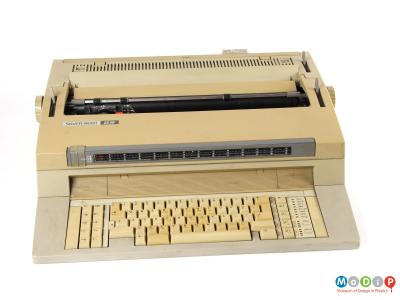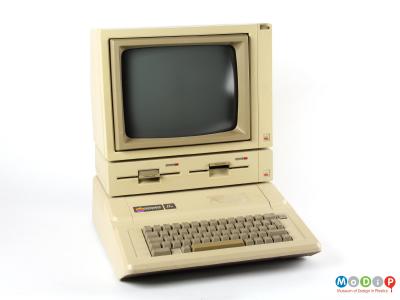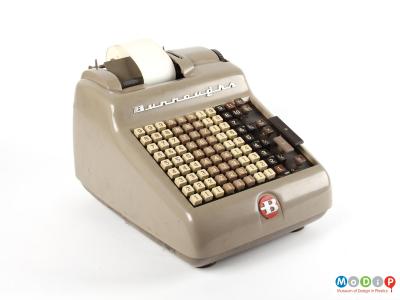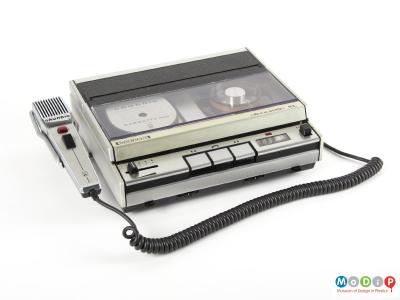The use of plastics abound in the modern office from the obvious casings of pieces of equipment to the hidden components such as the interchangeable daisy wheel of the Silver Reed EZ50 typewriter (1). In the office environment equipment needs to be sufficiently robust to withstand the inevitable everyday knocks and constant use. ABS is a good candidate for this job. It is strong, easily mouldable and is often the material of choice for electronic and computing equipment such as the Apple IIe, launched in 1984 (2). The yellowing of the casing of both the typewriter and the computer is an unfortunate characteristic and thought to be a result of the combined effects of UV exposure, heat and time.
The lightweight desk calculator (3) with an ABS case, designed by George Sowden for Alessi in 1997 demonstrates the use of colour and form to produce something that is both functional and pleasing to look at, whereas the adding machine (4) has robustness as its primary focus. This example of pre-decimal desk equipment from the1960s is very heavy with metal mechanism and casing. The keys however are made from ABS and are pleasingly shaped and ergonomically designed for repetitive use.
The dictation machine (5) not only employed plastic for elements of the case but it relied on plastics in the use of recording medium. The tapes it used were made from polyester film embedded with magnetic metal oxide particles in a plastic binder. Digital recording technology is now the format of choice.





